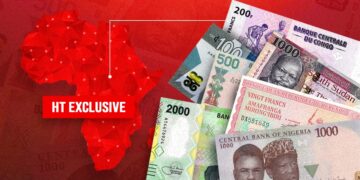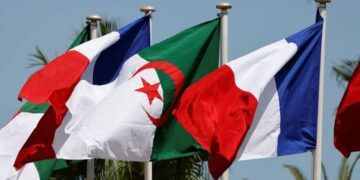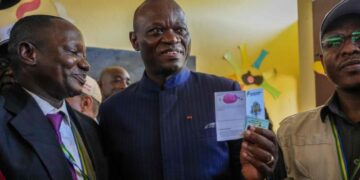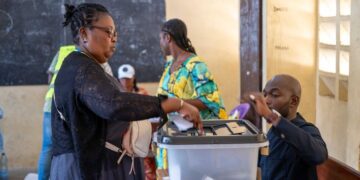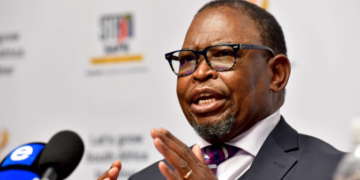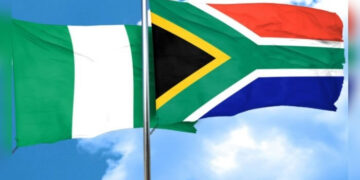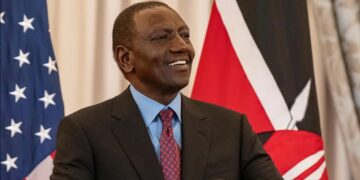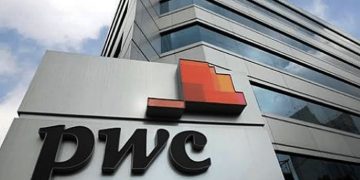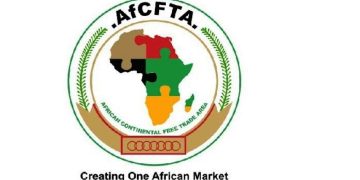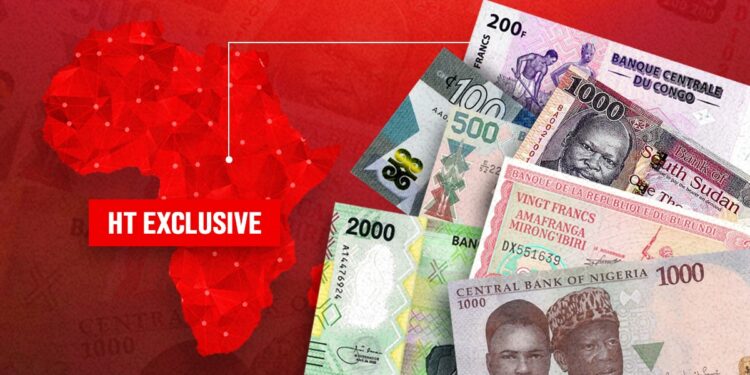By John Ikani
According to the International Monetary Fund (IMF), Africa is set to be the second fastest-growing economic region in the world with a 4% growth forecast this year.
While that strikes readers as good news, it’s not guaranteed.
Across Sub-Saharan Africa, numerous currencies are experiencing a worrying depreciation against leading global currencies like the dollar and the pound.
This weakening erodes the purchasing power of local citizens, potentially impacting their ability to afford essential goods and services.
“I just returned from the market and some of the food items you could get at the cost of 200 naira are now 500 naira. Most items have recorded a 500% increase, I wouldn’t even say 100%,” lamented Ishaq Lawal on X, formerly known as Twitter.
Heritage Times [HT] can report that it is not only food prices that are skyrocketing.
READ ALSO: JUST IN: Nigerian Senator Who Made Budget Padding Claims Suspended For Three Months
No thanks to Nigeria’s depreciating local unit, the cost of other basics like transportation, fuel and housing have also shot up with many Nigerians lamenting that the situation seems to be getting worse by the day.
Nigeria is not alone. It is a similar situation in Ghana a country once seen as a model of African development.
Neither is the narrative different in South Sudan, Burundi, the Democratic Republic of Congo, Kenya, Zambia and Rwanda.
Insights from the World Bank
A recent World Bank report paints a grim picture for African economies, highlighting the significant depreciation of currencies in some of the continent’s biggest oil producers.
Among the hardest hit are the naira of Nigeria and the kwanza of Angola, Africa’s top oil producers. Both currencies suffered a staggering 40% devaluation against the US dollar between December 2022 and September 2023.
According to the World Bank, “Nigeria’s woes stem from the central bank’s decision to dismantle trading restrictions on the official market, leading to an uncontrolled depreciation of the naira.”
Angola’s situation reflects a similar strategy: “Facing low oil prices and mounting debt, the central bank abandoned efforts to defend the kwanza’s value”
While Nigeria and Angola lead the pack in currency depreciation, other African nations face similar struggles.
South Sudan, Burundi, and the Democratic Republic of Congo saw their currencies weaken by 33%, 27%, and 18%, respectively. Even regional economic powerhouses like Kenya and Ghana weren’t spared, experiencing 16% and 12% devaluations.
The human cost of these currency declines is starkly evident in Zambia, Africa’s copper-rich nation. Food prices have skyrocketed in recent months, with essential items like maize, meat, and fish rising by over 14%.
In some cases, prices have doubled, putting them beyond the reach of many Zambians. In a country where 60% of the population lives in poverty and survives on less than $2 a day, this currency crisis translates to increased hardship and hunger.
What’s at the heart of the depreciations?
A major hurdle for African economies is the vast disparity between the supply and demand for foreign currencies.
This scarcity pushes individuals and businesses towards alternative sources like the black market, where rates are significantly higher.
Wealthier entities are the only ones who can afford these inflated prices, leaving vital imports, raw materials, education, healthcare, and tourism out of reach for many.
Another key factor is the continent’s heavy reliance on imports. Many African nations import far more finished goods than they export, creating a constant demand for foreign currencies like the US dollar and Chinese yuan to pay international suppliers.
When manufacturers struggle to import raw materials due to FX scarcity or high exchange rates, production costs spiral upwards. This inevitably translates to higher prices for consumers, hitting them both at the checkout and in transportation costs.
The pain doesn’t stop there. Businesses grind to a halt when they cannot repatriate their foreign currency earnings. A prime example is Emirates Airlines, which halted operations in Nigeria for over a year after being unable to retrieve $85 million in ticket sales revenue stuck in the country.
The International Air Transport Association reports a staggering $812 million trapped in Nigeria alone, the highest of any nation and nearly half the global total.
This dependence on external currencies weakens the local currency and fuels the need for foreign exchange.
In some regions, like parts of Sierra Leone, the dollarization of the economy is a stark reality.
Grocery stores and other businesses price goods and services in US dollars, further driving up demand for the dollar and weakening the local leone.
This creates a vicious cycle, making it even harder for the local currency to gain traction.
What are governments doing to stem the tide?
Nigeria’s central bank has made a bold move by injecting $10 billion worth of foreign currency into the market, primarily sourced from oil sales and foreign investments.
This significant influx aims to address two key issues: settling previously impossible foreign exchange debts and reducing demand for foreign currency.
The first wave of impact is felt in the form of settling outstanding foreign exchange debts. Previously, limitations on foreign exchange usage hampered businesses and individuals from fulfilling their obligations.
This move provides a much-needed lifeline, easing financial pressures and potentially boosting economic activity.
Furthermore, the central bank lifted the ban on importing 43 previously restricted items, including rice, cement, and steel products. This relaxation intends to curb the black market demand for foreign currency, which has been driving up prices for these essential goods.
While welcomed by consumers, local manufacturers express concerns about the potential undercutting of their competitiveness.
Neighbouring countries are also exploring alternative strategies to manage their foreign exchange reserves. Ghana’s “gold for oil” policy uses gold instead of cash to purchase oil, saving valuable foreign reserves.
Egypt is exploring a barter agreement with Kenya, while Zambia is increasing foreign currency deposit requirements for banks.
These regional efforts highlight the renewed debate surrounding the full implementation of the Continental Free Trade Agreement (AfCFTA). Established in 2018, AfCFTA aims to create a single market for goods and services within Africa, ultimately boosting intra-African trade and investment.
However, concerns remain about infrastructure limitations and the need to strengthen productivity and competitiveness across the continent to truly reap the benefits of this ambitious agreement.
